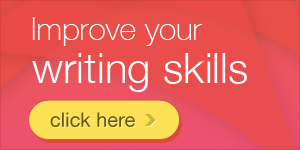Figures of speech are the most common type of questions which are asked in CBSE or for that matter any board examination. Since, poetry has so many things to learn about, it’s not at all easy to mug up all the instances where we are asked these in the poems.
To make life simpler, I bring to you this small guide with the most commonly used figures of speech. I assure you that 99% of what you see below is the only thing you need to know to answer these 1 markers!
Here is a list of what all you need to know about:
- Simile
- Metaphor
- Personification
- Apostrophe
- Oxymoron
- Irony
So let’s begin by explaining each one of them.
1. Simile
Simile is nothing but comparison between two very different objects. Though, you’ll need to have at least one point in common between them.
Eg:
… her face ashen like that of a corpse
2. Metaphor
It is almost similar to a simile but here we take it for granted that both the objects are same. In short, we can call it an implied simile.
eg: Life is a dream
Let’s take up an example to clear the difference between a metaphor and a simile.
Sachin played like a warrior (simile)
Sachin was a warrior in the game (Metaphor)

3. Personification
Here a motionless object (like a table) is spoken as if it has life.
Eg:
…..trees sprinting
A roadside stand that too pathetically pled…..
4. Apostrophe
Hey you little teddy bear, does she love me? Don’t take my wrong, this is what Apostrophe actually is. It’s when an author or poet directs a speech towards an abstract object or an imaginary person.
Eg:
Well hello jet plane!
5. Oxymoron
In this figure of speech, two contradictory terms are combined together. It’s derived from a Greek word which literally means “Sharp dull”.
Eg:
Greedy good-doers, beneficient beasts of prey
6. Irony
This one is the most commonly used of all in our day-to-day conversations. Irony is a form where the literal meaning is completely opposite to what is conveyed by the author or the poet.
Eg:
Will go on prancing, proud and unafraid
This is taken from Aunt Jennifer’s tigers and it brings forth a sense of irony because the tigers are much stronger than the woman who created them.
I’ve tried getting examples from NCERT textbooks so that you can relate them while you’re going through the poems.

